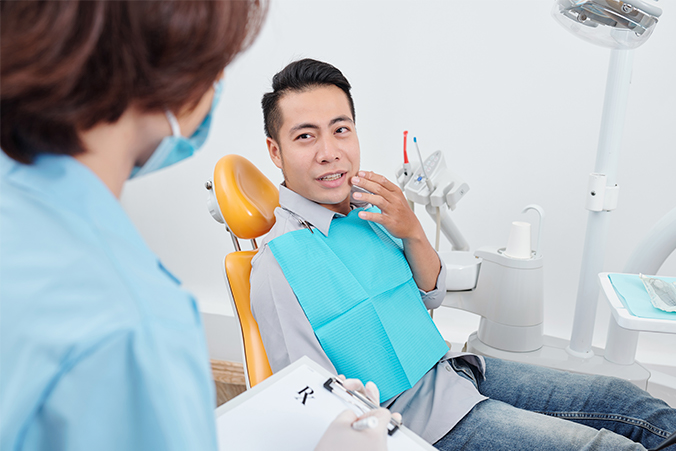Are you on your patient’s wavelength?

Each patient visit is an opportunity to build trust in your care. Being culturally aware enables you to communicate clearly and understandably with patients, no matter their ethnic or cultural backgrounds. One-to-one communication with patients at their levels shows respect and can increase cooperation in their treatment.
Why is this more important now? Your current (and potential) patients’ cultural backgrounds and ethnicities reflect America’s growing diversity. According to the U.S. Census Bureau’s July 2019 estimates, this is the makeup of the U.S. population:
- White (not Hispanic or Latino): 60.1%
- Hispanic or Latino: 18.5%
- Black or African American 13.4%
- Asian: 5.9%
- American Indian, Alaska Native, Native Hawaiian or other Pacific Islander: 1.5%
Since the 2010 U.S. Census, the non-white population percentage has increased from 36.2 to 39.9. Being aware of cultural differences, especially language, will put you and your patients on the same wavelength for achieving quality care. And you can develop valuable skills to do this.
Cultural competency consists of five components:
- Cultural awareness. Take time to understand patients’ beliefs, values and practices.
- Cultural knowledge. Learn world views of diverse patient groups.
- Cultural skill. Collect relevant cultural data about the patients’ health problems and conduct interviews and evaluations to determine treatments based on needs.
- Cultural encounters. Participate in multicultural activities to learn about diverse groups.
- Cultural desire. Deliver care for all patients equally, regardless of cultural values and beliefs.
To raise your practice’s competency level, you can take steps to more effectively communicate with patients of diverse backgrounds and their friends and relatives.
3 steps for closing the language gap
Ask your patients (or their friends or family members) what their preferred language is and what makes them comfortable and note it in the chart. Communicating with a patient in his or her native language is key. Not only does this put patients more at ease, but it also makes it easier to track their concerns about care.
Besides English, the top languages spoken at home in the U.S. are (ranked in order by most speakers): Spanish, Chinese, French or French-based creoles, Tagalog, Vietnamese, Korean, German, Arabic, Russian and Italian.
But what if you don’t speak your patients’ native languages? You can take three steps to boost your practice’s language capabilities:
- Take advantage of Delta Dental’s Language Assistance Program. Customer Service phone assistance is available in over 170 languages for enrollees.
- Advise patients with limited English proficiency that they can call the LAP to arrange for a qualified interpreter to help at no cost. For onsite interpretation services, call at least 72 hours in advanced of the appointment time.
- Keep on hand printed materials translated in the languages most relevant to your practice so they’re available to patients. This may include forms, pre- and post-operative instructions, health and wellness materials, emergency phone numbers and anything else that may help.
How to boost your practice’s cultural awareness
Learning more about cultural differences and achieving competency are two ways to ensure that your practice thrives in a changing cultural landscape. You can do this by gaining skills:
- Attend classes and continuing education courses, onsite or online, that address social customs among different cultures in your community.
- Go to multicultural events to learn about the interests, lifestyles and values of people with diverse backgrounds and form relationships.
- Learn a few key phrases in native languages, such as “hello,” “please,” “thank you,” “open wide,” “where does it hurt?” and “do you have any questions?”
- If you have bilingual or multilingual staff members, encourage them to help co-workers communicate with patients.
Achieving cultural competency can help your practice welcome more patients. You can update your Delta Dental directory listing if you have fluency in non-English languages. Let patients know you are on their wavelength
Delta Dental language resources for your practice
- Our website in English and in Spanish
- Automated telephone service for eligibility, benefits and more in Spanish
- Downloadable English to Spanish phrase guide (PDF)
- Dentist Handbook: Log in and select Reference Library; you can find LAP resource information and English, Chinese and Spanish versions of enrollee grievance forms.
Recent posts
- Prepare your practice for back-to-school season
- Delta Dental is partnering with dental schools to offer exclusive CE courses
- Drive better patient experiences with benefit conversations
- Offer care beyond the chair with teledentistry
- Healthy mouths begin with hygienists
- How to educate patients and make them partners in oral health
- Dr. Justin Perdichizzi — serving those who served
- Get your patients to make (and keep) their dental appointments
- One sign-on, many advantages
- Delta Dental hosts in-person Provider Advisory Council in Arizona
